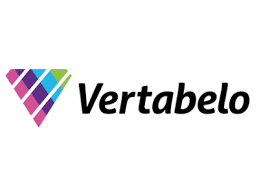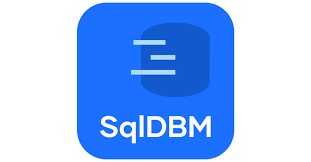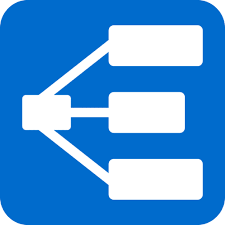Amazon Redshift is one of the most well-known data warehouses on the market, with a lot of features and efficiency. It holds a significant amount of raw data taken from a variety of sources. This information is difficult to comprehend and Data Modeling Tools aid in this by offering a platform that allow you to quickly and efficiently model data.
This article lists the greatest Redshift Data Modeling Tools available on the market that can help you get the most out of your data. You will also learn about Data Modeling and Data Modeling Tools, a brief introduction about Redshift and its key features and why you need Data Modeling Tools.
Table of Contents
What is Data Modeling?
Data Modeling is the process of studying data objects and their relationships with other objects. It’s used to research data requirements for a variety of commercial tasks. The Data Models are created in order to store the data in a database. The goal is to demonstrate the types of data that are required and stored in the system, as well as the connections between them, how the data can be categorised and organised, and the formats and features available. During the design and analysis phase of a project, Data Models are established to ensure that the application’s requirements are met.
What are Data Modeling Tools?
Data Modeling Tools allow you to quickly and efficiently model data. They serve as a link between the data and the various data model layers. Most Data Modeling tools will create database schemas for you, allow you to compare and integrate schemas and models, and reverse engineer existing databases into models. Computer-Aided Software Engineering (CASE) solutions, such as Data Modeling, Diagramming, and Visualization tools, are commonly utilized nowadays.
Data Modeling Tools make database design quick and simple, while also decreasing human errors. It aids in the construction of Data Definition Language (DDL), as well as the building of a high-performance database and useful reporting for stakeholders. A well-designed database reduces the chances of failure, lowers maintenance costs, and reduces the time it takes to complete a task.
Why Do You Need Data Modeling Tools?
For most firms, data is their most valuable asset. As a result, the database you use to keep track of this asset is more important than ever. When Data Analytics and Data Scientists need to slice and dice data to support important strategic business decisions, having data in a design that supports the application that puts it in motion, as well as delivering relevant information when the data is at rest, is critical. You must now prepare for both types of demands.
Simply said, whatever data you have must be transformed into a specified format before it can be saved in a database (i.e. Data Model needs to be created). As a result, you’ll be able to create these diagrams and models using Data Modeling Tools. When a Data Model is used in a system, the business concepts it represents are strengthened and enforced. Defining the entities and relationships in a Data Model is akin to describing the items and actions in an organization.
Unlock the full potential of your Amazon Redshift data warehouse with Hevo’s powerful data integration platform. You can streamline your data migrations while ensuring seamless data flow.
Check out what makes Hevo amazing:
- As your data sources evolve, Hevo supports schema evolution by adapting to changes.
- Configure custom mappings to align source data with Redshift.
- Monitor data quality and integrity throughout the migration process.
Elevate your Redshift Data Migration with Hevo. Join our 2000+ happy customers and make a smart choice for yourself.
Migrate your Redshift Data for freeWhat is Amazon Redshift?
Amazon Redshift is a cloud-based, fully managed, petabyte-scale data warehousing service. It enables you to start with a few gigabytes of data and gradually build up to a petabyte or even more. Redshift organises data into clusters that can be viewed at the same time. As a result, Redshift data may be retrieved quickly and easily. Users and apps can access each node independently.
Redshift can be used with a wide range of data sources and data analytics tools, as well as many existing SQL-based clients. It has a solid architecture that allows it to be easily integrated with a variety of business intelligence tools.
Each Redshift data warehouse is fully managed, which means that administrative duties such as backup creation, security, and setup are all automated. Redshift clusters can be further separated into slices, allowing for more granular analysis of data sets.
Because Redshift was built for huge data, its modular design allows it to scale effortlessly. Its multi-layered structure makes it simple to handle several queries at the same time.
Key Features of Redshift
Here are a few key features of Amazon Redshift:
- Column-oriented Databases: Data can be grouped into rows or columns in a database. Many OLTP databases are row-orientation systems. These systems, in other words, are designed to do a large number of minor actions like DELETE, UPDATE, and so on. When it comes to accessing massive volumes of data, a column oriented database like Redshift is built for greater speed. OLAP operations are the focus of Redshift. SELECT operations are optimised.
- Secure End-to-end Data Encryption: Data privacy and security requirements apply to all businesses and organisations, and encryption is one of the cornerstones of data protection. For data in transit, Amazon Redshift uses SSL encryption, and for data at rest, it uses hardware-accelerated AES-256 encryption. All data saved to disc, as well as any backup files, is encrypted. You won’t have to bother about key management because Amazon will do it.
- Cost-effective: The most cost-effective cloud data warehousing option is Amazon Redshift. The estimated cost is one-tenth that of standard on-premise warehousing. There are no hidden fees; consumers simply pay for the services they utilize. On the Redshift official website, you can learn more about pricing.
- Scalable: Amazon Redshift is a petabyte-scale data warehouse system from Amazon. Amazon Redshift is easy to use and scales to meet your needs. You may quickly modify the number or type of nodes in your data warehouse with a few clicks or a simple API call, and scale up or down as needed.
Redshift Data Modeling Tools
A significant number of Redshift Data Modeling Tools are available for various database platforms. It’s difficult to find one that satisfies the user’s requirements. To make this time-consuming task of choosing the best Redshift Data Modeling tools easier, check out the most popular list below:
1. Redshift Data Modeling Tool: DbSchema

DbSchema is a Redshift Data Modeling Tool for collaboratively visualising, deploying, and documenting schemas. Other integrated capabilities, such as the data explorer, visual query editor, data generator, and so on, make DbSchema a useful tool for anyone who works with databases on a regular basis. MySQL, PostgreSQL, SQLite, Microsoft SQL Server, MongoDB, MariaDB, Redshift, Snowflake, Google, and other relational and No-SQL databases are all supported by DbSchema. DbSchema visualises the database schema as diagrams by reverse-engineering it from the database. You’ll use diagrams and visual tools to interface with the database.
The DbSchema model uses a duplicate of the schema structure that is not dependent on the database. This allows you to deploy the schema across various databases, save the design model to a file, store it in GIT, collaborate on the schema, design the schema without database connectivity, compare different schema versions, and produce SQL migration scripts.
2. Redshift Data Modeling Tool: Vertabelo

The next Redshift Data Modeling Tool is Vertabelo. You can turn your browser into a full-featured database modeller. You can design at any level: Logical and Physical. You can also create DDL and migration scripts for the most major database management systems. It is very similar to Google Docs for database modeling. You can create, share, and access database models from anywhere at any time. If you already have a database project in the works, you can bring that to Vertabelo. It’s never been easier with their unique reverse engineering tool and auto layout option.
If you are interested in broadening your horizons and honing your talents in the following areas, you can explore their one-of-a-kind library. Fundamentals of database design, database design patterns, database design in practise, SQL online courses, and data science online courses are all available.
3. Redshift Data Modeling Tool: SqlDBM

The next Redshift Data Modeling Tool is SqlDBM. You may design a database model, make modifications, and generate new SQL scripts, as well as Alter scripts, by importing your SQL script. You can make your procedure as transparent as possible while you collaborate with DB Developers, Project Managers, and Analysts from different teams. You can control your project’s versions and generate modify scripts.
In addition to that, you can convert your project to various DB/DW formats with a single click. You may instantly develop a database model that provides powerful and effective visualization by integrating your existing DB/DW to SqlDBM. You can also make updates to existing SQL scripts and create new SQL scripts, including Alter scripts and make a specification for your schema, and include photographs of it.
4. Redshift Data Modeling Tool: ER/Studio Enterprise Team Edition

The next Redshift Data Modeling Tool is ER/Studio Enterprise Team edition. Data Modelers and Architects can use ER/Studio Enterprise Team Edition to create and exchange Data Models and metadata throughout the enterprise. It offers a complete solution for enterprise architecture and data governance, extensive model change management, unique incorporation of true enterprise data dictionaries, unique linking of constructs across models, integrated visual data lineage import, and integrated data and business process modeling, in comparison to its competitors.
5. Redshift Data Modeling Tool: Astera DW Builder

The next Redshift Data Modeling Tool is Astera DW Builder. Data Models are the heart of the Data Warehousing process in Astera DW Builder, acting as the foundation for all subsequent operations including ETL mappings, dimension and fact table populating, data consumption via the built-in OData module, and even change management after deployment.
6. Redshift Data Modeling Tool: ERBuilder Data Modeler

The next Redshift Data Modeling Tool is ERBuilder Data Modeler which allows developers to create databases graphically using entity relationship diagrams and generates the most common SQL databases automatically. It also makes database deployment simple for developers by providing a comprehensive visual data modeling environment.
7. Redshift Data Modeling Tool: Gleek.io

The last but not the least Redshift Data Modeling Tool is Gleek.io. For developers and software architects, Gleek.io diagram builder is a freemium text-to-diagram application. It’s a cloud-based platform for developing model-driven software that you can use in any browser. Because Gleek.io is intended for use in software planning sessions and real-time collaboration, it’s critical that diagrams be made rapidly.
Factors to Consider While Choosing Redshift Data Modeling Tools
When the complexity of Data Modeling Tools accessible increases, it may be tough to identify the right tool or application for you. As a result, it’s necessary to evaluate your use case using the following criteria:
- Usage and Needs: When choosing a Data Modeling Tool, this is the most crucial factor to consider. Each Data Modeling Tool concentrates on a distinct area of data modeling. You should first set down your business requirements in order to make the finest option. For example, a project that requires a Data Modeling Tool for simple tasks would profit immensely from one with modeling capabilities incorporated into the database. When Data Modeling is required to adapt to corporate demands, however, the same technology will not suffice.
- Scalability: As a project develops, its requirements vary. Make certain you’re using a tool that permits you to grow. Consider the use case and size of the data model before selecting a data modeling tool. When selecting a tool, it is vital to assess the existing requirements.
- Features: Once you’ve determined what your company’s requirements are, you’ll need to analyze and contrast various Data Modeling Tools. This requires deciding whether the Data Modeling Tools can handle UTM or use case modeling, as well as many users. It should also support conceptual, logical, and physical Data Modeling. Make a list of advantages and disadvantages and compare them.
- Integration: Be aware that some Data Modeling Tools generate a data model in a proprietary format, while others do so in a generic manner. To guarantee that the end product fits easily into the database or existing tech setup/workflows, choose your modeling tool carefully.
- Community Support: Every tool offers a user community where you may ask questions and receive responses. Make sure your tool isn’t isolated and that it has a big user base.
Interested in learning about Redshift vs Netezza? Read our comprehensive guide to discover the key comparisons and choose the best option for your data requirements.
Conclusion
In this article, you learned about various aspects of Data Modeling and the various Redshift Data Modeling Tools. In addition, you also understood the key factors that help in selecting the right Data Modeling Tool.
Discover how to leverage Amazon Redshift Data Studio for improved data management and visualization. Find practical tips for efficient use.
However, as a Developer, extracting complex data from a diverse set of data sources like Databases, CRMs, Project management Tools, Streaming Services, and Marketing Platforms to your Database can seem to be quite challenging. If you are from non-technical background or are new in the game of data warehouse and analytics, Hevo Data can help! Connect with us today to improve your data management experience and achieve more with your data.
FAQs on Data Modelling Tools
1. Is Amazon Redshift an ETL tool?
No, Amazon Redshift is not an ETL (Extract, Transform, Load) tool. It is a fully managed data warehouse service provided by Amazon Web Services (AWS).
2. Is Redshift OLAP or OLTP?
Amazon Redshift is an OLAP (Online Analytical Processing) system. It is designed for complex queries and data analysis, optimized for handling large volumes of data and performing analytics and reporting tasks.
3. What are the 4 types of data modeling?
The four types of data modeling are:
1. Conceptual Data Modeling
2. Logical Data Modeling
3. Physical Data Modeling
4. Dimensional Data Modeling











